John Hurrell – 13 August, 2015
This is an unusual show, but it really needs background contextual information built into the short essay which, though beautifully poetic, is - in terms of discussion - somewhat vague. There seems to be no cohesive logic except that Snow likes these artists - and that seems to be his point. He doesn't want to fully argue a case - except state that they want to 'act' as artists.
Auckland
Toby Raine, Ian Peter Weston, Diane Scott
No Remedy, But More
Curated by Glen Snow
4 August - 1 September 2015
Glen Snow is known in Auckland as an unusually inventive painter and (sometimes through this site) a nuanced and highly articulate writer. This show at Godkin’s has him curating a section of work from three Elam friends and colleagues, its title being an evocative ellipsis (subtraction, compression, and the mental substitution of ‘paint’) of a Thoreau line, “There is no remedy for love but to love more.”
The three artists (as painters and sculptors) we discover, couldn’t be more varied, but Snow has put them together. Over the last two or three years, their works have been presented in a number of Auckland venues such as Snake Pit, Room and Allpress Gallery - in very different group shows.
Toby Raine‘s four oil portraits stylistically look as if they were inspired by (British painter) Glenn Brown’s flattened interpretations of Frank Auerbach, but much more rawer and rougher. They feature a loose German expressionist manner of paint handling - with lots of quickly applied, straight lines from a thickish brush, meeting at angles. Based initially on photographs of bearded celebrities, they become improvised celebrations of the physicality of paint and canvas, rejecting illusionism. Despite being made with gestural paint, they have a linear graphic quality, like spontaneously drawn cartoons that are not too beholden to source material - but take their focus in another ‘emotional’ direction.
Ian Peter Weston’s paper, string, paint and glue sculptures project out from the walls, sometimes on hinges; strange decorative and flimsy planes that (as firm paper panels) float in the middle of Godkin’s livingroom. Usually his method of construction is a little like that of papier mâché, except the result is not bulky but thin and skinlike, with the glossy planar surface of glued strips undulating and not perfectly flat. These strange patchworks look as if they were made by a mad scientist, a Thomas Demand equivalent of Gyro Gearloose. One work amusingly seems to follow the ornamental rhythms of laid out birthday cakes.
Diane Scott’s paintings on aluminium plates initially seem linked to printmaking with their scratched away lines and intricate shiny surfaces. In this country many painters have used aluminium, including Richard Killeen (opaque paint) and Bill Hammond (transparent), but here Scott’s use of geometry emphasises an industrial and architectural sensibility with their explorations of rendered orthogonal space. Occasionally with some, if you concentrate on the surface of the picture plane (and not look ‘through’ it) they look a little like ceramic tiles, and less metallic.
This is an unusual show, but it really needs background contextual information built into the short essay which, though beautifully poetic, is - in terms of discussion - somewhat vague. There seems to be no cohesive logic except that Snow likes these artists - and that seems to be his point. He doesn’t want to fully argue a case - except state that they want to ‘act’ as artists.
I would argue that the essay is a lost opportunity, for the advantage of take-home blurbs (which incidentally all institutions and dealers should provide) is that curatorial argument and detailed analysis of the methods of contributing individuals can be synthesised. Then it can be absorbed at home when the visitor is relaxed in their own space. Hopefully (after reading and applying engaged, contemplative thought) they might be sufficiently excited that they will want to return and investigate further.
John Hurrell
Recent Comments
John Hurrell
Hi Glen. Many thanks for your comments and generous elaborative participation. My comments were mainly directed at the brevity of ...
Glen Snow
As you have stated it is an ‘unusual show’, part of the effect I was certainly after, but I was ...
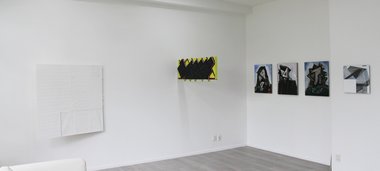
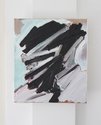
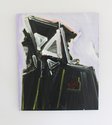
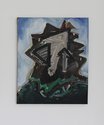
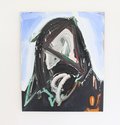
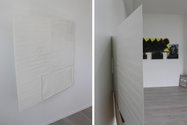
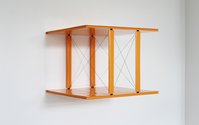
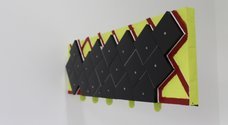
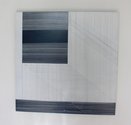
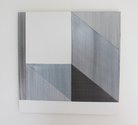
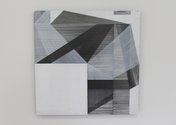
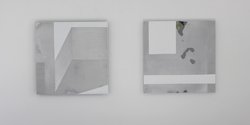
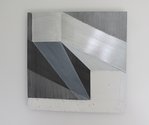
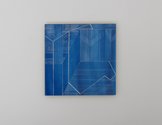
 Two Rooms presents a program of residencies and projects
Two Rooms presents a program of residencies and projects Advertising in this column
Advertising in this column



This Discussion has 2 comments.
Comment
Glen Snow, 6:10 p.m. 15 August, 2015 #
As you have stated it is an ‘unusual show’, part of the effect I was certainly after, but I was confused by your sense that it lacked any cohesion. For my own part, I didn’t want to crowd the work out with my own interpretations, but I do object to the conclusion that their friendship and my ‘liking’ them might be all that holds them together. I have plenty of artist-friends I could have chosen from, but I picked these three in particular, because each represented a starkly different mode of working with paint from the other. Grouped together they reflect diverse approaches to that medium. Yet despite those differences in handling the language of paint, there was a clear interchange between the works aided by a shared geometric formalism. What became interesting in this shared space were the different trajectories to the calculations of those geometric figures.
Toby’s calculations, for instance are ritualised in a system of limits he places on his handling before he begins, and the specific scheme for each work is then painted on the back. They are paintings doubled in this sense. I was interested in your reference to Toby’s work as being similar to “spontaneously drawn cartoons”. I would agree that they have this quality, like some odd meeting of Philip Guston, Sydney Nolan, and Carroll Dunham, put through a blender with, as you have noted, a fair dash of Frank Auerbach.
The Thomas Demand reference to Ian’s work is well cited, and although I would agree there is something brilliantly ‘daffy’ about this work, I am not sure I would go so far as to point to Gyro Gearloose. In my own mind I think of the old ‘Boys Own: how to …’ books on model making. These paintings on paper – and Ian would insist that they are indeed paintings, which fold around themselves, and thus take up more space than is usually ‘allowed’ for such definitions – make references to parts of aeroplanes and spacecraft, while also borrowing the language of post-minimalism. They take their calculations from the world of aerodynamics.
The printmaking allusions are interesting in Diane’s work, although I’m not sure about the leap to ceramic tiles. Her geometry, a kind of Constructivist and Bauhaus-like calculation, plays on flatness at that liminal edge where it shifts toward an illusory and architectural three-dimensions before snapping back and slipping in its composition.
I noticed you subverted my use of the word ‘act’ in the blurb, as a reference to a ‘role’ for the artists’ to take up. My usage was to underscore the insistence of paint as a verb, an action, and grammatical imperative or command for those involved in its medium. It is true I aimed at an affective register by quoting Thoreau, in the attempt to speak to the commitment to painting by individual artists that in so doing extend it into interesting and at times unstable and edgy propositions. – Glen Snow
John Hurrell, 7:31 a.m. 17 August, 2015 #
Hi Glen. Many thanks for your comments and generous elaborative participation. My comments were mainly directed at the brevity of your essay as a lost opportunity for getting out contextual information - the background for the show. Many dealers (like Hopkinson Mossman, Michael Lett, Trish Clark, or Starkwhite) and institutions (like Artspace, St Paul St Gallery, Te Tuhi, Gus Fisher) do an excellent job of circulating this material, esp when it is online too, but some (like AAG) are surprisingly uninterested, even if it can be done cheaply. Wall labels need to be available in a portable format so they (the art historical detail) can be enjoyed at leisure at home as well as onsite. (Published catalogues can later extend this material further.)
Another 'chestnut' - the other side of the coin when thinking about use of language - is about 'liking' a work as sole motivation for curatorial inclusion or praise/condemnation in responded criticism. (I'm indulgently digressing a little here and ignoring the discussion about what one knows about the personality of the artist). Some of course say it is irresponsible (is no argument) to rely on the visceral, but I think that only applies in a situation where use of articulated language is the dominant method of response. Sometimes instinct alone is useful, and verbal expression might arrive later, with language initially not providing a cogent articulation. The argument might take time for the writer or curator to clarify - but they can be honest and admit it. (I'm digressing because I think it is very interesting, hence am throwing this out there...)
Participate
Register to Participate.
Sign in
Sign in to an existing account.